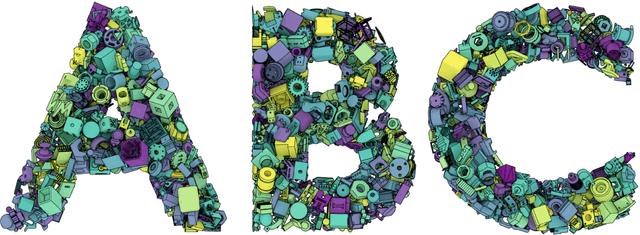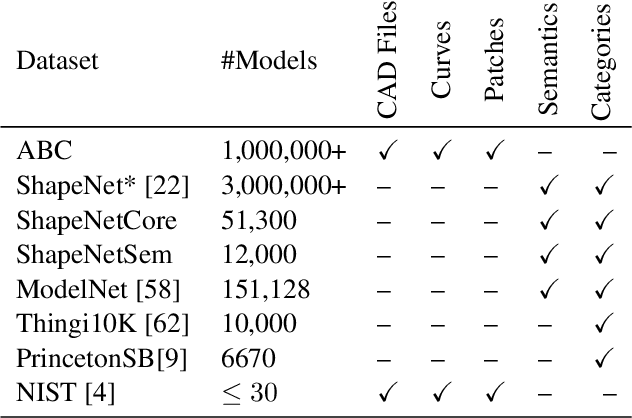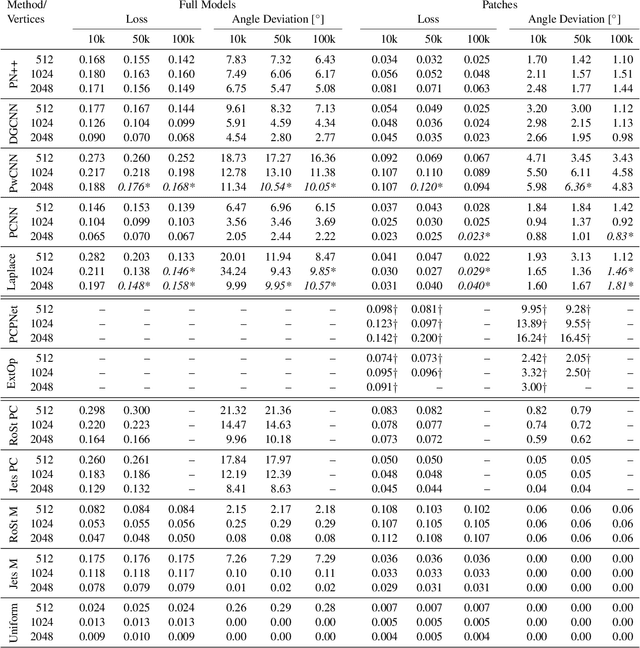Zhongshi Jiang
FRESA:Feedforward Reconstruction of Personalized Skinned Avatars from Few Images
Mar 24, 2025Abstract:We present a novel method for reconstructing personalized 3D human avatars with realistic animation from only a few images. Due to the large variations in body shapes, poses, and cloth types, existing methods mostly require hours of per-subject optimization during inference, which limits their practical applications. In contrast, we learn a universal prior from over a thousand clothed humans to achieve instant feedforward generation and zero-shot generalization. Specifically, instead of rigging the avatar with shared skinning weights, we jointly infer personalized avatar shape, skinning weights, and pose-dependent deformations, which effectively improves overall geometric fidelity and reduces deformation artifacts. Moreover, to normalize pose variations and resolve coupled ambiguity between canonical shapes and skinning weights, we design a 3D canonicalization process to produce pixel-aligned initial conditions, which helps to reconstruct fine-grained geometric details. We then propose a multi-frame feature aggregation to robustly reduce artifacts introduced in canonicalization and fuse a plausible avatar preserving person-specific identities. Finally, we train the model in an end-to-end framework on a large-scale capture dataset, which contains diverse human subjects paired with high-quality 3D scans. Extensive experiments show that our method generates more authentic reconstruction and animation than state-of-the-arts, and can be directly generalized to inputs from casually taken phone photos. Project page and code is available at https://github.com/rongakowang/FRESA.
Rethinking Video-Text Understanding: Retrieval from Counterfactually Augmented Data
Jul 18, 2024Abstract:Recent video-text foundation models have demonstrated strong performance on a wide variety of downstream video understanding tasks. Can these video-text models genuinely understand the contents of natural videos? Standard video-text evaluations could be misleading as many questions can be inferred merely from the objects and contexts in a single frame or biases inherent in the datasets. In this paper, we aim to better assess the capabilities of current video-text models and understand their limitations. We propose a novel evaluation task for video-text understanding, namely retrieval from counterfactually augmented data (RCAD), and a new Feint6K dataset. To succeed on our new evaluation task, models must derive a comprehensive understanding of the video from cross-frame reasoning. Analyses show that previous video-text foundation models can be easily fooled by counterfactually augmented data and are far behind human-level performance. In order to narrow the gap between video-text models and human performance on RCAD, we identify a key limitation of current contrastive approaches on video-text data and introduce LLM-teacher, a more effective approach to learn action semantics by leveraging knowledge obtained from a pretrained large language model. Experiments and analyses show that our approach successfully learn more discriminative action embeddings and improves results on Feint6K when applied to multiple video-text models. Our Feint6K dataset and project page is available at https://feint6k.github.io.
ABC: A Big CAD Model Dataset For Geometric Deep Learning
Dec 15, 2018



Abstract:We introduce ABC-Dataset, a collection of one million Computer-Aided Design (CAD) models for research of geometric deep learning methods and applications. Each model is a collection of explicitly parametrized curves and surfaces, providing ground truth for differential quantities, patch segmentation, geometric feature detection, and shape reconstruction. Sampling the parametric descriptions of surfaces and curves allows generating data in different formats and resolutions, enabling fair comparisons for a wide range of geometric learning algorithms. As a use case for our dataset, we perform a large-scale benchmark for estimation of surface normals, comparing existing data driven methods and evaluating their performance against both the ground truth and traditional normal estimation methods.
Surface Networks
Jun 18, 2018



Abstract:We study data-driven representations for three-dimensional triangle meshes, which are one of the prevalent objects used to represent 3D geometry. Recent works have developed models that exploit the intrinsic geometry of manifolds and graphs, namely the Graph Neural Networks (GNNs) and its spectral variants, which learn from the local metric tensor via the Laplacian operator. Despite offering excellent sample complexity and built-in invariances, intrinsic geometry alone is invariant to isometric deformations, making it unsuitable for many applications. To overcome this limitation, we propose several upgrades to GNNs to leverage extrinsic differential geometry properties of three-dimensional surfaces, increasing its modeling power. In particular, we propose to exploit the Dirac operator, whose spectrum detects principal curvature directions --- this is in stark contrast with the classical Laplace operator, which directly measures mean curvature. We coin the resulting models \emph{Surface Networks (SN)}. We prove that these models define shape representations that are stable to deformation and to discretization, and we demonstrate the efficiency and versatility of SNs on two challenging tasks: temporal prediction of mesh deformations under non-linear dynamics and generative models using a variational autoencoder framework with encoders/decoders given by SNs.
 Add to Chrome
Add to Chrome Add to Firefox
Add to Firefox Add to Edge
Add to Edge